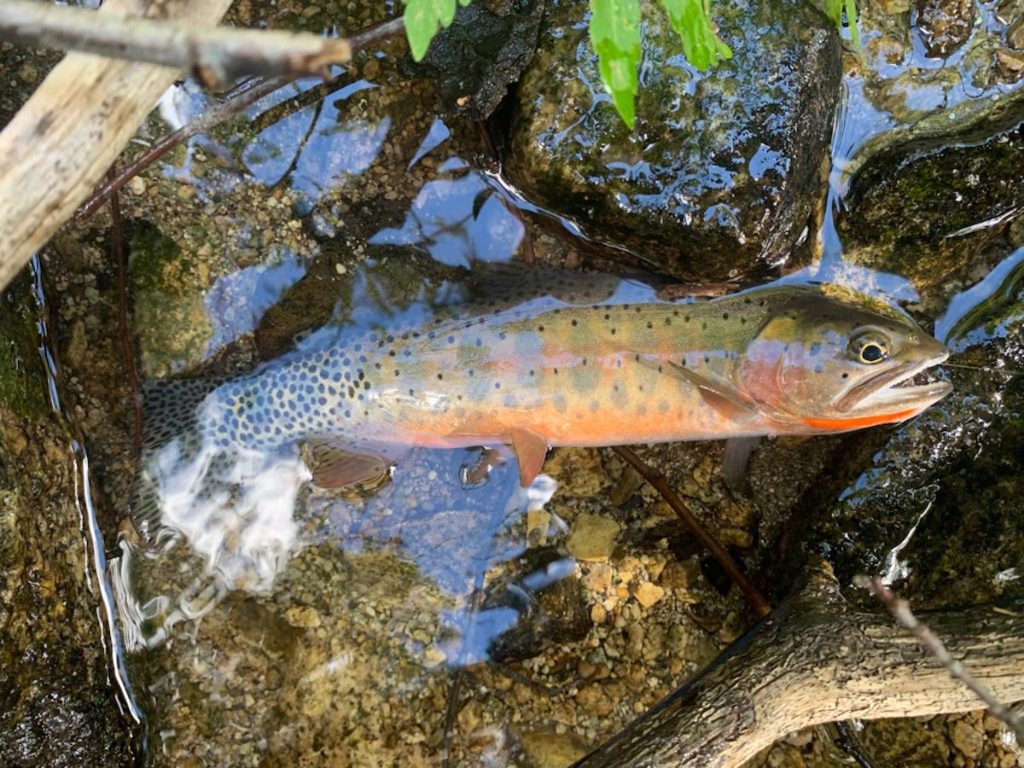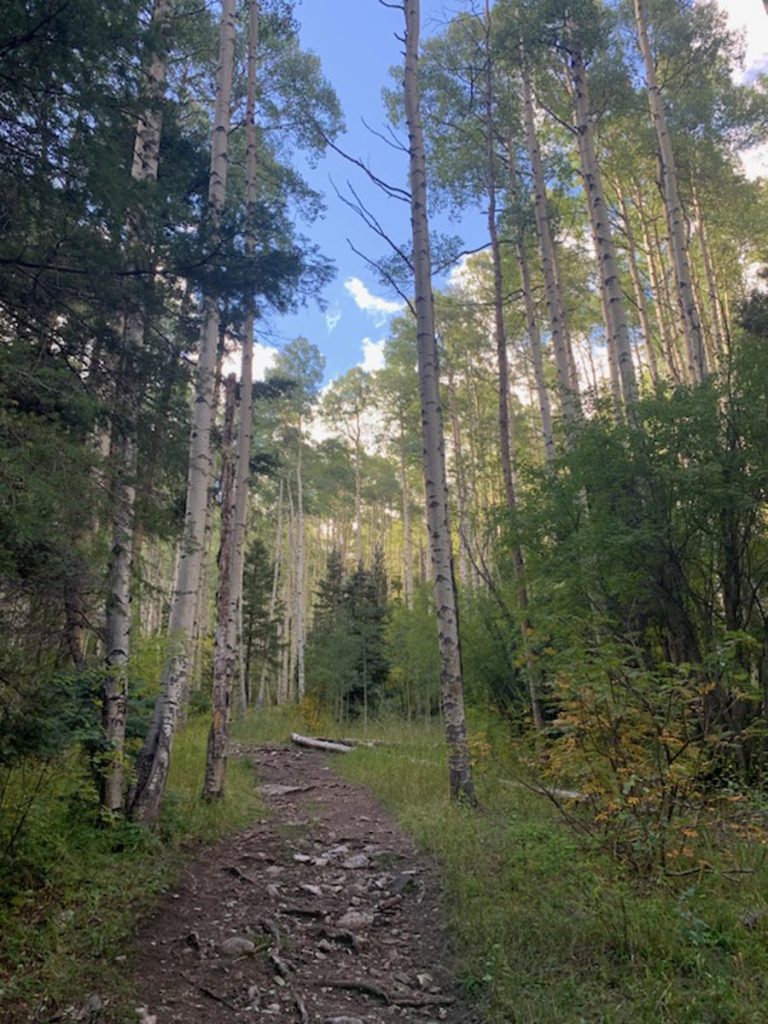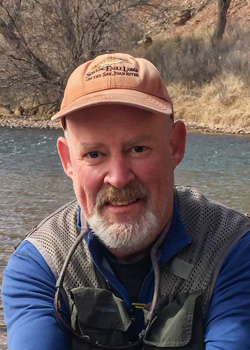
What many visitors to northern New Mexico see on a map as the Columbine-Hondo Wilderness Area is recognized by every Questeno in very simple terms: my back yard. At first glance, the mountains south and east of town don’t appear notably spectacular. There are no sky-scraping peaks like the Sierras or Denali, no hundred-foot waterfalls on postcards at Rael’s Market. The thing about wilderness areas, though, what makes them so special, is that you have to enter them to feel the power. You have to immerse yourself before you can access the sublime.
Climbing Flag Mountain is still on my bucket list, as are all the summits stretching east towards the ski areas. My problem with targeting mountains in the area is that fishing always gets in the way. The Columbine-Hondo contains some of the best Rio Grande Cutthroat habitat in all of New Mexico. The mountains are big. They catch a lot of snow and hold it a long time. The streams, as a result, are cold and clean.
Besides my aging hips, the cutthroats in Columbine Creek may be my greatest obstacle to ever beholding the view from atop Lobo Peak. One might think approaching the peaks from the Rio Hondo side would present fewer fishing distractions. But one would be wrong. That side is rich with good fishing, in the Hondo itself, but also Yerba, Italianos, Gavilan, and Manzanita Creeks, where ancestral pure cutthroats still hold on.
Most people know these creeks for the accumulation of cars usually parked at their trailheads. The trails are bigger than the creeks, which are so small and overgrown that you usually hear them instead of see them. But they each harbor cutthroats, as you will learn if you can find a way to get your fly to a holding spot.
On the Hondo tributaries, a holding spot is any place a cutthroat trout can move from side to side to feed on aquatic insects and find sanctuary from predators, all while staying wet (not a given on these tiny creeks). If you can find such a spot and land a fly on the water, you will definitely get a hit.
I fish small creeks with a 6-foot rod. Sometimes I dangle my bug a foot below my rod tip, reaching out and lowering my fly to the creek surface, ready to set the hook. This is called dapping, and it requires an angler’s willingness to crouch and crawl in the water. Another useful tool is the bow and arrow cast, which requires holding your fly on a tight line, bending your rod back, and releasing your fly. If executed correctly, the bow and arrow shoots the fly straight and on target.
I’m not biased against other fishing methods, but fly fishing is the best way to catch trout on small New Mexican creeks. You want a lure that drifts, if only for a few inches, as opposed to a spinner or bait that just plunks and sinks to the bottom. Your fly should be made of buoyant materials like hair or foam, since you won’t have much room to dry your fly off by casting. Keep in mind that your fly doesn’t need to keep floating to remain effective. But it does need to be visible, with white wings or tags of orange, yellow, or pink in case it drops below the surface.
No joke, fish in the Hondo tributaries will eat anything they can fit in their mouth. They don’t have a choice, given the short growing season between the snow times and the general shortage of food bugs floating by. And since the tribs are so difficult to fish, their cutthroats don’t encounter a lot of people and are relatively forgiving.
They are, however, as beautiful as the day the mountains were born. Sometimes they can get pretty big as well.




